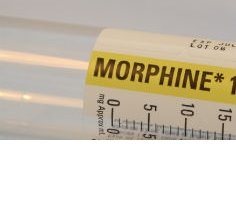Opioids for Persistent Pain: Using Opioids in Practice course



This is the second of two sessions covering the use of oral and transdermal opioids for persistent pain (also referred to as chronic, chronic non-cancer or long term pain). Opioids have proven benefit for treating acute pain and in palliative care [1], however, the use of opioid medicines in those conditions will not be covered in this session. This session covers the use of opioids in clinical practice including opioid trials, dosing, equivalence, switching, reviewing and tapering opioids.
Objectives
By the end of this session, you will be able to:
- Describe how to conduct an opioid trial and review the effectiveness of opioid analgesia
- State what is meant by opioid equivalence
- State the considerations to be made when switching opioids
- Explain how to taper opioids


Emma Davies has been an Advanced Pharmacist Practitioner in Pain for over 12 years. She provides primary care clinics which, although covering medication management, take a holistic approach to supporting people to live effectively with pain. In addition, she teaches, develops guidelines and educational materials and provides advice to the Welsh Government on pain management, as well as being a regular contributor to professional journals.
Co-founder of the livewellwithpain.co.uk website; Emma is also currently studying for a PhD, examining trends in opioid prescribing and healthcare resource utilisation in Wales.

- Anaesthesia Fundamentals | Anatomy | Mediastinum a...
- Posted By eIntegrity Healthcare e-Learning
- Posted Date: 2025-02-22
- Location:Online
- This session describes the contents, relations and anatomical divisions of the mediastinum.
- Anaesthesia Fundamentals | Anatomy | Microstructur...
- Posted By eIntegrity Healthcare e-Learning
- Posted Date: 2025-02-22
- Location:Online
- This session will cover the structure of the lungs and pleura at a cellular level. In particular there will be an emphasis on the structure and function relationships which allow gas exchange to occur.
- Anaesthesia Fundamentals | Anatomy | Trachea, Main...
- Posted By eIntegrity Healthcare e-Learning
- Posted Date: 2025-02-22
- Location:Online
- This session describes the structure, relations, blood and nerve supply of the trachea, carina, main bronchi and major bronchopulmonary segments.
- Anaesthesia Fundamentals | Anatomy | Anatomy of th...
- Posted By eIntegrity Healthcare e-Learning
- Posted Date: 2025-02-22
- Location:Online
- This session describes the anatomy of the oral cavity, pharynx and larynx. The nerve supply to the larynx and the implications of damage to these nerves is also described.
- Anaesthesia Fundamentals | Anatomy | Nasal Anatomy...
- Posted By eIntegrity Healthcare e-Learning
- Posted Date: 2025-02-22
- Location:Online
- This session focuses on the anatomy of the nose. It will also explore complications of nasal instrumentation, the functions of the nose, and its vascular and nerve supply.






